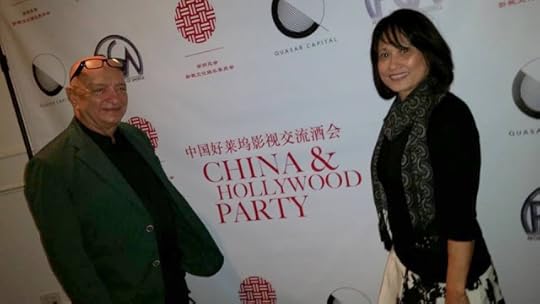Kenneth Atchity's Blog, page 149
November 20, 2016
ITS NEVER TOO LATE
As the man who found everything he was looking for in his “retirement,” Dr. Atchity is a shining example of the never-ending potential of dreams and aspirations. In a HuffPost interview with Jeff Rivera Ken outlines many of the problems he encountered when shifting to a new career along with some useful advice for those looking to go down the same road.

If you were to start your career over again as a producer, knowing what you know now, what advice would you give yourself?
I would probably say to think it over because I realized throughout my career, and from talking to many producers, that producing is probably the most masochistic profession in the world. In the old days, when I first started, you actually got development fees when you set up a project or sold it but that stopped about years ago. Now you don’t get paid until the movie is made.
There are of course dozens of things that can go wrong and prevent a movie from being made. I have one in production right now that has been in the works for 21 years, and I produced one two years ago that was in the works for 20 years. So, you definitely have to have a day job or other things to do.
I’d also say that you should strategize as best as you can in order to stay on top of the game. The important thing about producing is simply staying in the running, which means you have at least $10,000 at the baccarat table. If you don’t have that stake, you’re out of the game. You have to find a way to do that because it’s really a rich person’s profession or the profession of somebody very, very young. When I got into the industry I was already 45 years old so I didn’t have any particular advantage. I would say be smart and diversify, and that’s what I ended up doing; I took my own hypothetical advice.
What advice do you have for people who are middle aged and want to be producers?
Well, I became a producer in the years after becoming a tenured professor, which I resigned from in order to pursue the career I have now, but there are plenty of other examples too. I’ll never forget the time that Dr. Joyce Brothers invited me on her television show after hearing my story. She had two other people there that night, one was a hairdresser who became a psychiatrist after going through medical school and the other was an 83-year-old man who was signing up for law school.
The older man explained how he had to stand in the admission line to sign up and was surrounded by 20-something year olds. It wasn’t long before the kid behind him finally said, sir, excuse me, but I just can’t help asking you, what are you doing in this line? And the man looked at him and he said, what line should I be in? I absolutely love his story because that’s the attitude we have to have towards life. If you want to do it, just do it.
And you’re never too old to do it, it’s never too late.
There are numerous examples of people who succeeded in later life, including Bernard Shaw and Colonel Sanders. In fact, when I was young I remember reading something that Benjamin Franklin wrote: “There is nothing wrong with retirement as long as it does not interfere with the man’s work.” This has been my motto ever since. I’m retired from the academic world but it hasn’t prevented me from working. I’ve written more books since retiring than I did when I was an academic. I’ve made more than 30 movies, I’ve had a wonderful life, and I do all the things I want to do.
It’s crazy to think you have to stick with what you’re doing for the rest of your life as it’s now typical in American society for people to have two or three careers. We’re living longer and that’s the way it should be. Who wants to live to be 90 or 100 and have the same career the entire time? So if you’re thinking you’re too old for it, read my book, leave your day job, live out your dreams, and never give up.
Read more

If you were to start your career over again as a producer, knowing what you know now, what advice would you give yourself?
I would probably say to think it over because I realized throughout my career, and from talking to many producers, that producing is probably the most masochistic profession in the world. In the old days, when I first started, you actually got development fees when you set up a project or sold it but that stopped about years ago. Now you don’t get paid until the movie is made.
There are of course dozens of things that can go wrong and prevent a movie from being made. I have one in production right now that has been in the works for 21 years, and I produced one two years ago that was in the works for 20 years. So, you definitely have to have a day job or other things to do.
I’d also say that you should strategize as best as you can in order to stay on top of the game. The important thing about producing is simply staying in the running, which means you have at least $10,000 at the baccarat table. If you don’t have that stake, you’re out of the game. You have to find a way to do that because it’s really a rich person’s profession or the profession of somebody very, very young. When I got into the industry I was already 45 years old so I didn’t have any particular advantage. I would say be smart and diversify, and that’s what I ended up doing; I took my own hypothetical advice.
What advice do you have for people who are middle aged and want to be producers?
Well, I became a producer in the years after becoming a tenured professor, which I resigned from in order to pursue the career I have now, but there are plenty of other examples too. I’ll never forget the time that Dr. Joyce Brothers invited me on her television show after hearing my story. She had two other people there that night, one was a hairdresser who became a psychiatrist after going through medical school and the other was an 83-year-old man who was signing up for law school.
The older man explained how he had to stand in the admission line to sign up and was surrounded by 20-something year olds. It wasn’t long before the kid behind him finally said, sir, excuse me, but I just can’t help asking you, what are you doing in this line? And the man looked at him and he said, what line should I be in? I absolutely love his story because that’s the attitude we have to have towards life. If you want to do it, just do it.
And you’re never too old to do it, it’s never too late.
There are numerous examples of people who succeeded in later life, including Bernard Shaw and Colonel Sanders. In fact, when I was young I remember reading something that Benjamin Franklin wrote: “There is nothing wrong with retirement as long as it does not interfere with the man’s work.” This has been my motto ever since. I’m retired from the academic world but it hasn’t prevented me from working. I’ve written more books since retiring than I did when I was an academic. I’ve made more than 30 movies, I’ve had a wonderful life, and I do all the things I want to do.
It’s crazy to think you have to stick with what you’re doing for the rest of your life as it’s now typical in American society for people to have two or three careers. We’re living longer and that’s the way it should be. Who wants to live to be 90 or 100 and have the same career the entire time? So if you’re thinking you’re too old for it, read my book, leave your day job, live out your dreams, and never give up.
Read more

Published on November 20, 2016 00:00
November 18, 2016
Don't Miss Reader's Entertainment's Interview with thriller author Thomas Jay Berger, MD, November 22nd!
Reader's Entertainment presents a special event interview with thriller author Thomas Jay Berger, MD.
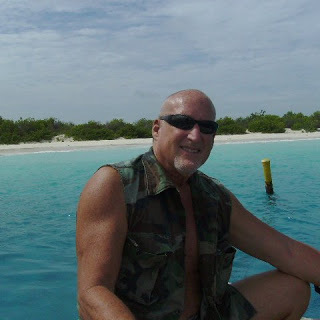
Tuesday Nov. 22nd at 6PM Eastern Time/ 3PM Pacific
What is it like to stop a heart and duel with death in his own backyard with a human life at stake? A gifted heart surgeon finds himself embroiled in the middle of a murder which has him as prime suspect.
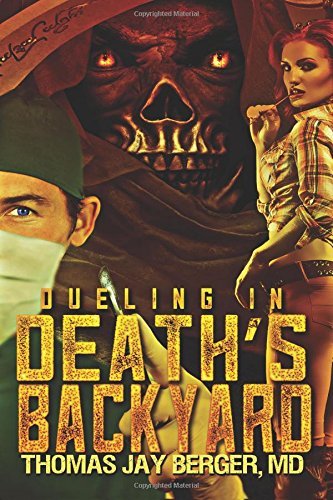

During this half-hour program the author will discuss and answer questions about his best selling medical thriller "Dueling in Death's Backyard".
Join the discussion online live at Reader's Entertainment
There will have an open chat room where you can send questions and/or comments.


Tuesday Nov. 22nd at 6PM Eastern Time/ 3PM Pacific
What is it like to stop a heart and duel with death in his own backyard with a human life at stake? A gifted heart surgeon finds himself embroiled in the middle of a murder which has him as prime suspect.


During this half-hour program the author will discuss and answer questions about his best selling medical thriller "Dueling in Death's Backyard".
Join the discussion online live at Reader's Entertainment
There will have an open chat room where you can send questions and/or comments.

Published on November 18, 2016 10:19
Jeff Riveria Interviews Producer Kenneth Atchity on How He Began a New Career at 45
 For Dr. Kenneth Atchity, age was nothing but a number. Despite being a tenured professor for a substantial amount of time, the decision to retire at the age of 45 came at the drop of a hat as he put all of his talents into a different cause. Now 72-years-old, Atchity is an Emmy-nominated Hollywood producer and author who has been successful in completely turning his life in a different direction.
For Dr. Kenneth Atchity, age was nothing but a number. Despite being a tenured professor for a substantial amount of time, the decision to retire at the age of 45 came at the drop of a hat as he put all of his talents into a different cause. Now 72-years-old, Atchity is an Emmy-nominated Hollywood producer and author who has been successful in completely turning his life in a different direction.There are many who choose not to pursue their dreams until later on in life and a lot of talented people who are completely unaware of their true calling until decades into their career. In the following interview, Atchity talks about his new book Sell Your Story to Hollywood in which he addresses his own success story and experiences working in the industry. It’s not always easy to get your foot in the door but Atchity is out to show readers that, whether young or old, there’s always a way to see your story on the big screen.
As the man who found everything he was looking for in his “retirement,” Dr. Atchity is a shining example of the never-ending potential of dreams and aspirations. The following interview outlines many of the problems Atchity encountered when shifting to a new career along with some useful advice for those looking to go down the same road.
IT’S NEVER TOO LATE
If you were to start your career over again as a producer, knowing what you know now, what advice would you give yourself?
I would probably say to think it over because I realized throughout my career, and from talking to many producers, that producing is probably the most masochistic profession in the world. In the old days, when I first started, you actually got development fees when you set up a project or sold it but that stopped about years ago. Now you don’t get paid until the movie is made.
There are of course dozens of things that can go wrong and prevent a movie from being made. I have one in production right now that has been in the works for 21 years, and I produced one two years ago that was in the works for 20 years. So, you definitely have to have a day job or other things to do.
I’d also say that you should strategize as best as you can in order to stay on top of the game. The important thing about producing is simply staying in the running, which means you have at least $10,000 at the baccarat table. If you don’t have that stake, you’re out of the game. You have to find a way to do that because it’s really a rich person’s profession or the profession of somebody very, very young. When I got into the industry I was already 45 years old so I didn’t have any particular advantage. I would say be smart and diversify, and that’s what I ended up doing; I took my own hypothetical advice.
Read more

Published on November 18, 2016 00:00
November 16, 2016
3 fundamental elements of superb storytelling By Nick Morgan
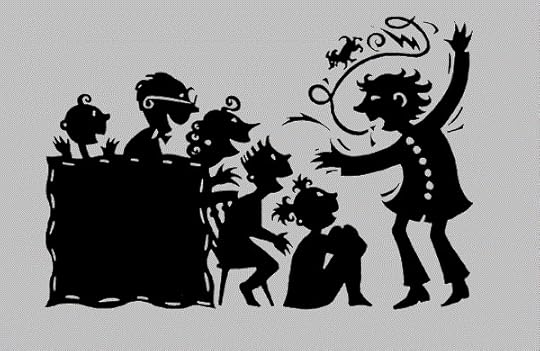
1. Make the stakes high enough. There's an old Hollywood nostrum that, if a scene is dragging, you introduce a gun. That immediately raises the stakes, because someone could get killed. How can you make your story about life and death? Shakespeare knew that those were the themes worth telling stories about. Everything else is small beer.
2. Offer a quest. That, of course, is just of the great plot structures that have stood the test of storytelling time, for tens of thousands of years, and still enchant us. It's a huge mistake to think your story must be completely new. We like stories best when we understand the structure, when we know where they're going. If you tell us a compelling quest, we're enthralled because we know that, after a long and arduous journey, the hero will prevail because of her grit and determination. We just want to see how hard the journey is and how determined the hero. Can you make us, the audience, the hero? Even better.
3. Present a problem to solve. Our minds are hard-wired to want to solve problems when you present them in the right way. That engages us, enlists us in the struggle and propels us along the journey.
To become a great storyteller, embrace one of the ancient structures, such as the quest. Embrace the conflict, raise the stakes, and give us a worthy problem to solve. If you can do all that, we will listen to you all day.
A version of this article originally appeared on Public Words .
Read more

Published on November 16, 2016 00:00
November 14, 2016
Character of the Happy Warrior By William Wordsworth
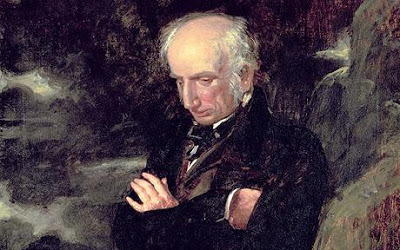
Who is the happy Warrior? Who is he
That every man in arms should wish to be?
It is the generous Spirit, who, when brought
Among the tasks of real life, hath wrought
Upon the plan that pleased his boyish thought:
Whose high endeavours are an inward light
That makes the path before him always bright;
Who, with a natural instinct to discern
What knowledge can perform, is diligent to learn;
Abides by this resolve, and stops not there,
But makes his moral being his prime care;
Who, doomed to go in company with Pain,
And Fear, and Bloodshed, miserable train!
Turns his necessity to glorious gain;
In face of these doth exercise a power
Which is our human nature's highest dower:
Controls them and subdues, transmutes, bereaves
Of their bad influence, and their good receives:
By objects, which might force the soul to abate
Her feeling, rendered more compassionate;
Is placablebecause occasions rise
So often that demand such sacrifice;
More skilful in self-knowledge, even more pure,
As tempted more; more able to endure,
As more exposed to suffering and distress;
Thence, also, more alive to tenderness.
'Tis he whose law is reason; who depends
Upon that law as on the best of friends;
Whence, in a state where men are tempted still
To evil for a guard against worse ill,
And what in quality or act is best
Doth seldom on a right foundation rest,
He labours good on good to fix, and owes
To virtue every triumph that he knows:
Who, if he rise to station of command,
Rises by open means; and there will stand
On honourable terms, or else retire,
And in himself possess his own desire;
Who comprehends his trust, and to the same
Keeps faithful with a singleness of aim;
And therefore does not stoop, nor lie in wait
For wealth, or honours, or for worldly state;
Whom they must follow; on whose head must fall,
Like showers of manna, if they come at all:
Whose powers shed round him in the common strife,
Or mild concerns of ordinary life,
A constant influence, a peculiar grace;
But who, if he be called upon to face
Some awful moment to which Heaven has joined
Great issues, good or bad for human kind,
Is happy as a Lover; and attired
With sudden brightness, like a Man inspired;
And, through the heat of conflict, keeps the law
In calmness made, and sees what he foresaw;
Or if an unexpected call succeed,
Come when it will, is equal to the need:
He who, though thus endued as with a sense
And faculty for storm and turbulence,
Is yet a Soul whose master-bias leans
To homefelt pleasures and to gentle scenes;
Sweet images! which, wheresoe'er he be,
Are at his heart; and such fidelity
It is his darling passion to approve;
More brave for this, that he hath much to love:
'Tis, finally, the Man, who, lifted high,
Conspicuous object in a Nation's eye,
Or left unthought-of in obscurity,
Who, with a toward or untoward lot,
Prosperous or adverse, to his wish or not
Plays, in the many games of life, that one
Where what he most doth value must be won:
Whom neither shape or danger can dismay,
Nor thought of tender happiness betray;
Who, not content that former worth stand fast,
Looks forward, persevering to the last,
From well to better, daily self-surpast:
Who, whether praise of him must walk the earth
For ever, and to noble deeds give birth,
Or he must fall, to sleep without his fame,
And leave a dead unprofitable name
Finds comfort in himself and in his cause;
And, while the mortal mist is gathering, draws
His breath in confidence of Heaven's applause:
This is the happy Warrior; this is he
That every man in arms should wish to be.

Published on November 14, 2016 11:11
November 9, 2016
Tennessee Williams on the Three Stages of Playwrighting

A playwright goes through three phases. First, he is submissive. He is a nobody. He is afraid to assert himself. Everybody cuts his play. Or orders him to build up a part for himself. He yields.
In his second stage he has become a purist. Everything is a threat to his integrity. He throws his weight around.
And in the third he is a veteran. He has learned to accept the collaboration of other creative minds.
—Tennessee Williams

Published on November 09, 2016 00:44
November 7, 2016
On Writing: THE BLAKE SNYDER BEAT SHEET
Everyone, all across town, in a position to buy or in the effort to sell, is trying to wrap their brains around the same question your friends were asking you Saturday night: “What is it?”
—Blake Snyder, Save the Cat
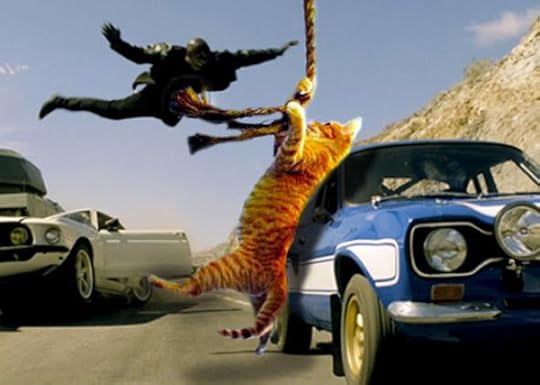
Opening Image – A visual that represents the struggle & tone of the story. A snapshot of the main character’s problem, before the adventure begins.
Set-up – Expand on the “before” snapshot. Present the main character’s world as it is, and what is missing in their life.
Theme Stated (happens during the Set-up) – What your story is about; the message, the truth. Usually, it is spoken to the main character or in their presence, but they don’t understand the truth…not until they have some personal experience and context to support it.
Catalyst – The moment where life as it is changes. It is the telegram, the act of catching your loved-one cheating, allowing a monster onboard the ship, meeting the true love of your life, etc. The “before” world is no more, change is underway.
Debate – But change is scary and for a moment, or a brief number of moments, the main character doubts the journey they must take. Can I face this challenge? Do I have what it takes? Should I go at all? It is the last chance for the hero to chicken out.
Break Into Two (Choosing Act Two) – The main character makes a choice and the journey begins. We leave the “Thesis” world and enter the upside-down, opposite world of Act Two.
B Story – This is when there’s a discussion about the Theme – the nugget of truth. Usually, this discussion is between the main character and the love interest. So, the B Story is usually called the “love story”.
The Promise of the Premise – This is the fun part of the story. This is when Craig Thompson’s relationship with Raina blooms, when Indiana Jones tries to beat the Nazis to the Lost Ark, when the detective finds the most clues and dodges the most bullets. This is when the main character explores the new world and the audience is entertained by the premise they have been promised.
Midpoint – Dependent upon the story, this moment is when everything is “great” or everything is “awful”. The main character either gets everything they think they want (“great”) or doesn’t get what they think they want at all (“awful”). But not everything we think we want is what we actually need in the end.
Bad Guys Close In – Doubt, jealousy, fear, foes both physical and emotional regroup to defeat the main character’s goal, and the main character’s “great”/“awful” situation disintegrates.
All is Lost – The opposite moment from the Midpoint: “awful”/“great”. The moment that the main character realizes they’ve lost everything they gained, or everything they now have has no meaning. The initial goal now looks even more impossible than before. And here, something or someone dies. It can be physical or emotional, but the death of something old makes way for something new to be born.
Dark Night of the Soul – The main character hits bottom, and wallows in hopelessness. The Why hast thou forsaken me, Lord? moment. Mourning the loss of what has “died” – the dream, the goal, the mentor character, the love of your life, etc. But, you must fall completely before you can pick yourself back up and try again.
Break Into Three (Choosing Act Three) – Thanks to a fresh idea, new inspiration, or last-minute Thematic advice from the B Story (usually the love interest), the main character chooses to try again.
Finale – This time around, the main character incorporates the Theme – the nugget of truth that now makes sense to them – into their fight for the goal because they have experience from the A Story and context from the B Story. Act Three is about Synthesis!
Final Image – opposite of Opening Image, proving, visually, that a change has occurred within the character.
—Blake Snyder, Save the Cat

Opening Image – A visual that represents the struggle & tone of the story. A snapshot of the main character’s problem, before the adventure begins.
Set-up – Expand on the “before” snapshot. Present the main character’s world as it is, and what is missing in their life.
Theme Stated (happens during the Set-up) – What your story is about; the message, the truth. Usually, it is spoken to the main character or in their presence, but they don’t understand the truth…not until they have some personal experience and context to support it.
Catalyst – The moment where life as it is changes. It is the telegram, the act of catching your loved-one cheating, allowing a monster onboard the ship, meeting the true love of your life, etc. The “before” world is no more, change is underway.
Debate – But change is scary and for a moment, or a brief number of moments, the main character doubts the journey they must take. Can I face this challenge? Do I have what it takes? Should I go at all? It is the last chance for the hero to chicken out.
Break Into Two (Choosing Act Two) – The main character makes a choice and the journey begins. We leave the “Thesis” world and enter the upside-down, opposite world of Act Two.
B Story – This is when there’s a discussion about the Theme – the nugget of truth. Usually, this discussion is between the main character and the love interest. So, the B Story is usually called the “love story”.
The Promise of the Premise – This is the fun part of the story. This is when Craig Thompson’s relationship with Raina blooms, when Indiana Jones tries to beat the Nazis to the Lost Ark, when the detective finds the most clues and dodges the most bullets. This is when the main character explores the new world and the audience is entertained by the premise they have been promised.
Midpoint – Dependent upon the story, this moment is when everything is “great” or everything is “awful”. The main character either gets everything they think they want (“great”) or doesn’t get what they think they want at all (“awful”). But not everything we think we want is what we actually need in the end.
Bad Guys Close In – Doubt, jealousy, fear, foes both physical and emotional regroup to defeat the main character’s goal, and the main character’s “great”/“awful” situation disintegrates.
All is Lost – The opposite moment from the Midpoint: “awful”/“great”. The moment that the main character realizes they’ve lost everything they gained, or everything they now have has no meaning. The initial goal now looks even more impossible than before. And here, something or someone dies. It can be physical or emotional, but the death of something old makes way for something new to be born.
Dark Night of the Soul – The main character hits bottom, and wallows in hopelessness. The Why hast thou forsaken me, Lord? moment. Mourning the loss of what has “died” – the dream, the goal, the mentor character, the love of your life, etc. But, you must fall completely before you can pick yourself back up and try again.
Break Into Three (Choosing Act Three) – Thanks to a fresh idea, new inspiration, or last-minute Thematic advice from the B Story (usually the love interest), the main character chooses to try again.
Finale – This time around, the main character incorporates the Theme – the nugget of truth that now makes sense to them – into their fight for the goal because they have experience from the A Story and context from the B Story. Act Three is about Synthesis!
Final Image – opposite of Opening Image, proving, visually, that a change has occurred within the character.

Published on November 07, 2016 00:00
November 5, 2016
Great Night at the China Hollywood Party
Published on November 05, 2016 00:40
November 4, 2016
Sandra Siegal's The Charnel House Opens Today!
"The Charnel House took us by surprise. It has an original story and some truly stellar acting!"
"...an original and very well-told story."
Book your tickets asap at, http://www.laemmle.com/films/41439
Rent or buy it at iTunes here: https://itunes.apple.com/us/movie/the-charnel-house/id1163401550

"...an original and very well-told story."
Book your tickets asap at, http://www.laemmle.com/films/41439
Rent or buy it at iTunes here: https://itunes.apple.com/us/movie/the-charnel-house/id1163401550

Published on November 04, 2016 10:04
November 3, 2016
Dennis Walsh looking cheerful at Wrigley Field!
Published on November 03, 2016 00:00


